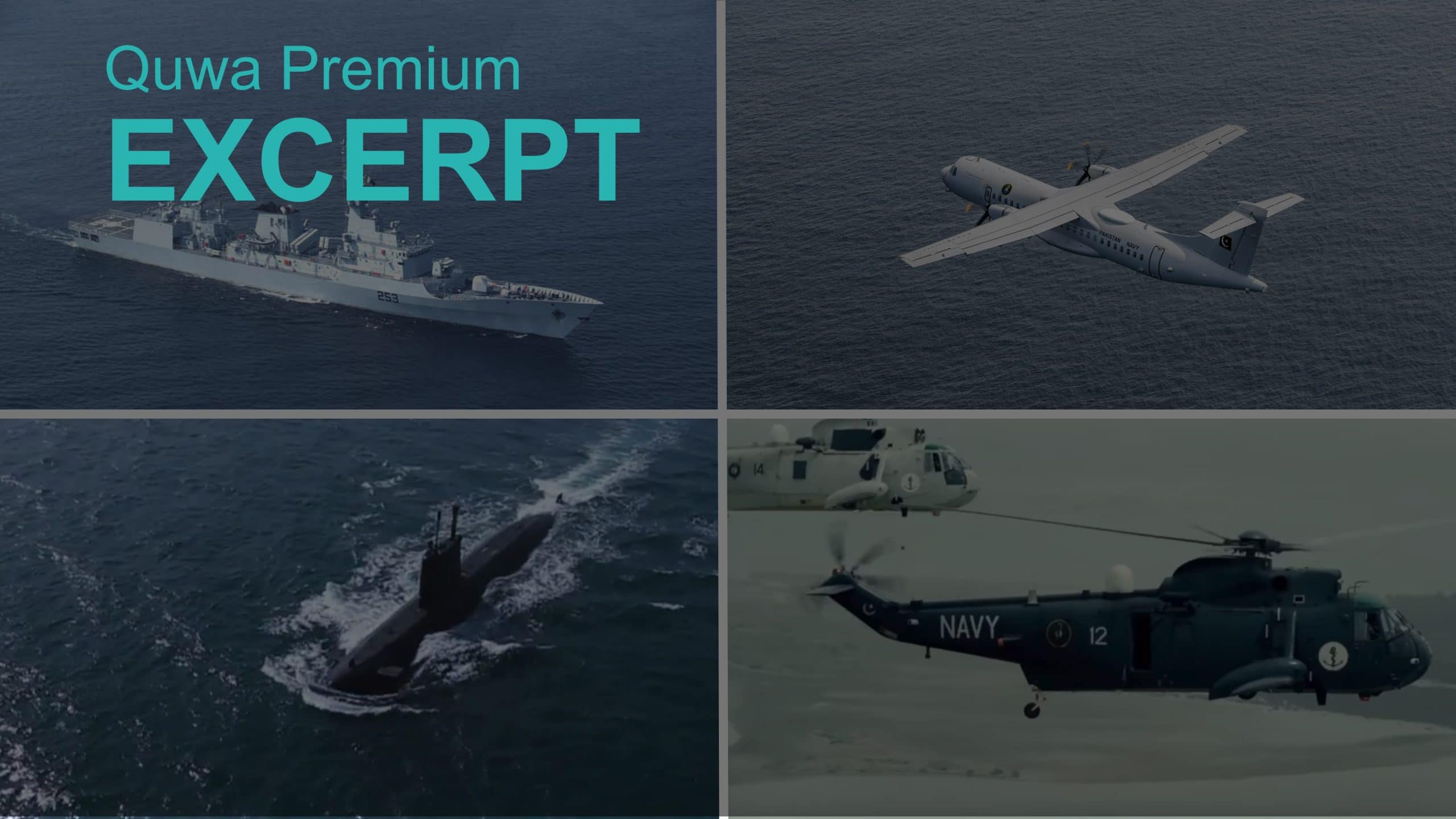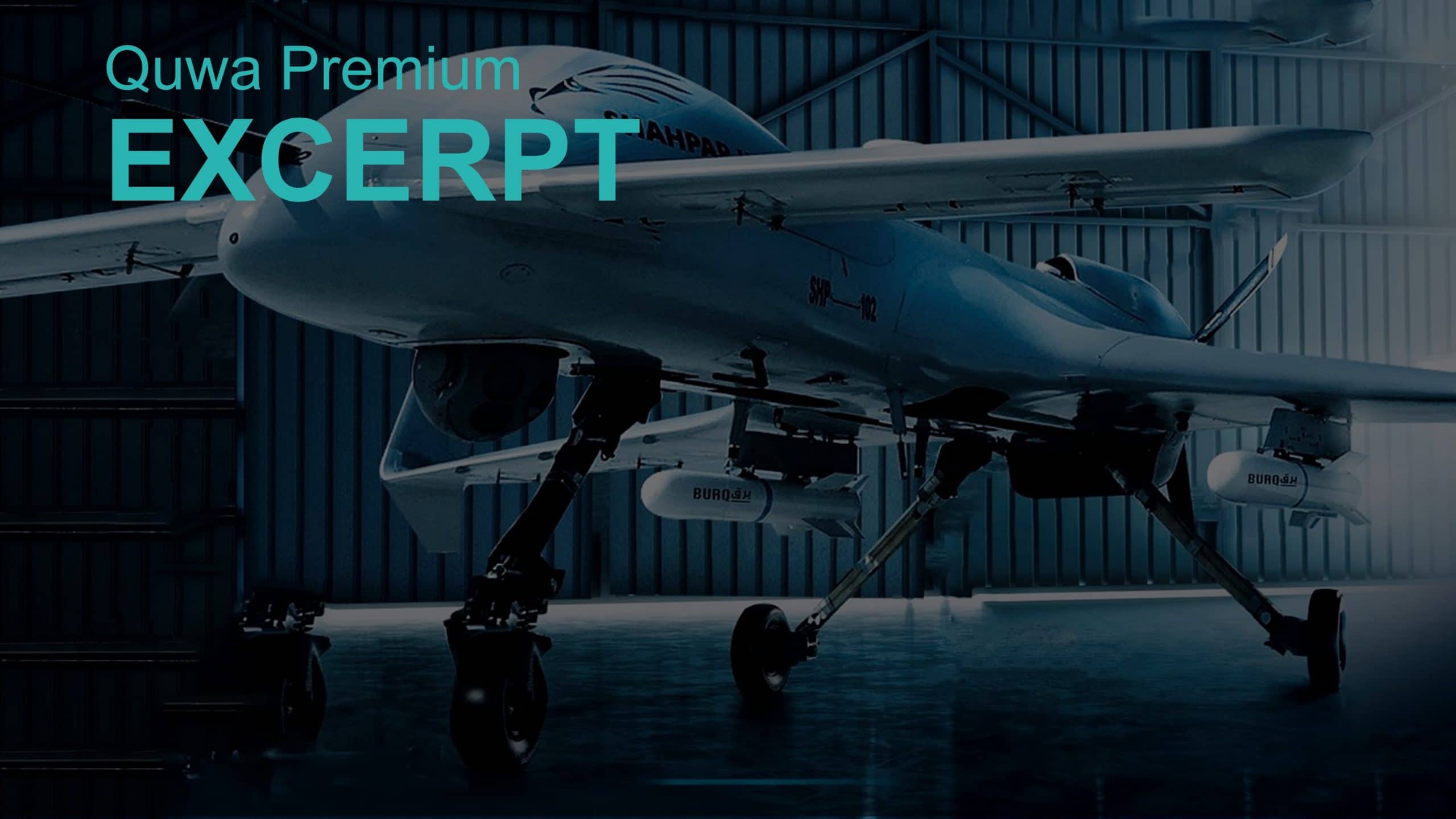3079Views

Outgoing Pakistan Navy Chief Sets Massive 50-Ship Fleet Vision
On 07 October 2020, the Pakistan Navy (PN) appointed Admiral Muhammad Amjad Khan Niazi as its new Chief of Naval Staff (CNS). Admiral Niazi will succeed Admiral Zafar Mahmoud Abbasi as CNS.
In his change-of-command speech, the outgoing CNS outlined the service’s modernization plans for 2030 across its surface, sub-surface, and aviation domains. Overall, Admiral Abbasi emphasized that the PN will aggressively expand its deployment capabilities, and, in parallel, its in-house development capacity.
The PN has already taken several organizational steps to absorb these upcoming changes.
First, the PN reformed its traditional destroyer and patrol craft squadrons into three Surface Task Groups (STG). The PN stationed STG 1, STG 2, and STG 3 at Gwadar, Ormara, and Karachi, respectively.
Second, the PN activated naval air stations in Pakistan’s west coast for day and night aviation operations.
Third, the PN revised its creeks area defence strategy to focus on offensive operations through integrated strike groups comprising of both Marines and Special Operations Forces (SOF) units.
Having set these foundations, Admiral Abbasi announced that the PN is working on the following goals.
With a Loaded Procurement Pipeline in Tow, the Pakistan Navy Rises | There is more at play than just accumulating assets. The PN has already built the foundation of a network-enabled warfare capability , but its far from reaching its potential. This will be realized in full as the PN inducts its new surface combatant and aviation assets. | Read More
Expanding the Surface Fleet to Over 50 Ships
Historically, the PN operated around eight or nine ‘major’ surface ships (i.e., multi-mission frigates, corvettes, or destroyers with a displacement of over 2,000 tons). However, Adm. Abbasi highlighted that the small force size “constrained [Pakistan’s] regional footprint and influence.”
To eliminate this constraint, the PN will move towards a fleet of over 50 ships, of which 20 will be “major surface ships.” In terms of major surface combatants, Adm. Abbasi revealed that the PN will receive four Type 054A/P frigates from China between 2021 to 2023. In addition, the four MILGEM corvettes will join the PN fleet from 2023 to 2025. The PN inducted its first 2,300-ton “corvette” – which is based on Damen Shipyard’s OPV-1900 design – in early 2020, and the second ship, PNS Tabouk, will join in November of this year. The outgoing CNS added that “six additional ships of larger tonnage are being contracted.”
Including the four F-22P frigates, the PN currently has 14 ‘major’ surface combatants in the pipeline. Thus, additional ships are still within the PN’s procurement roadmap. To this end, Adm. Abbasi had outlined two main programs: the Jinnah-class frigate and the purchase of six ships of “larger tonnage.”
Adm. Abbasi clarified that the PN is acquiring four MILGEM corvettes and that the Jinnah-class frigate is a separate, but adjoining, program. One should note that the MILGEM corvettes the PN is receiving are also significantly modified variants of the Turkish Ada-class design. The most notable difference is the addition of a 16-cell vertical launch system (VLS) in the PN ships (the standard Ada-class lacks this feature).
The outgoing CNS stated, “under the MILGEM project, complete design knowhow will be transferred” to the PN, and that the fifth ship will be the first Jinnah-class frigate. Currently, the Jinnah-class is under the design and development phase. Adm. Abbasi’s statements seem to imply that Pakistan bought ownership of both the modified corvette design and the future frigate program.
The Jinnah-Class Frigate: Pakistan’s Next Generation Warship? | Though high cost (relative to the PN’s other programs), Pakistan’s MILGEM program calls for both modern ships and a proprietary frigate design. | Read More
Launching the Hangor Submarine Program
According to Adm. Abbasi, the Hangor submarine program is “progressing well.” Pakistan ordered the air-independent propulsion submarines (SSP) from China Shipbuilding & Offshore International Co. Ltd (CSOC) in 2015. In 2016, the PN stated that China and Pakistan would evenly split the production of the submarines. The first four boats – which China is building – will arrive in Pakistan in 2022 and 2023. KSEW’s four SSPs are due by 2028.
The outgoing CNS added that the PN is acquiring one Type 039A submarine from the People’s Liberation Army Navy (PLAN) for training and acclimation purposes. He added that the PN is getting this submarine on a “gratis basis,” i.e., at no additional charge.
Finally, Ormara will house a repair and rebuild facility for the Hangor. Overall, Adm. Abbasi stated that a primary goal of the Hangor is to transform Pakistan from a “submarine-operating navy into a submarine-building navy,” i.e., to locally design and manufacture future submarines. He added that the program does involve design and capacity transfer to the Naval Research and Development Institute (NRDI).
In 2018, KSEW had showcased a scale model of the Hangor and some of its specifications. The information suggests that the Hangor is similar to the S26, i.e., the export version of the Type 039A.
China is Now Pakistan’s Qualitative Driver | Not only is China Pakistan’s main supplier of equipment, but Islamabad now actively relies on Beijing for next-generation technologies. | Read More
Inducting New Long-Range Maritime Patrol Aircraft (LRMPA)
Under its Naval Air Arm Vision, the PN intends to induct a total of three RAS-72 Sea Eagle maritime patrol aircraft (MPA) and 10 new jet-powered long-range maritime patrol aircraft (LRMPA).
The PN already operates two of the three RAS-72s; the third aircraft will join in 2021. Adm. Abbasi stated that the 10 new LRMPAs will replace the PN’s aging Lockheed Martin P-3C Orion aircraft. According to the outgoing CNS, the PN has already selected the platform and contracted the conversion project. He added that the LRMPA will use the same electronics suite as the RAS-72.
Pakistan began seeking a new LRMPA in 2018. Initially, the main criteria was that the base aircraft should be jet-powered, but otherwise, the PN was open to working with any supplier, including U.S. companies.
In March 2020, the PN released a tender for one twin-engine aircraft to work as the platform for the new LRMPA. Interestingly, the specifications listed in the tender narrowed the required aircraft to the Embraer Lineage 1000E. Based on the Embraer E190, the Lineage 1000E is a specially configured VIP/VVIP aircraft. However, Embraer no longer offers the aircraft itself, so it is only available on the second-hand market.
Pakistan Seeks New Platform for Long-Range Anti-Sub Warfare Aircraft | The Pakistan Navy (PN) released a tender for one twin-engine jet-powered aircraft it will use as a platform for its next-generation long-range maritime patrol aircraft (LRMPA). | Read More.
Enlarging Marines and Special Operations Forces
Citing an elevated asymmetrical threat environment, the outgoing CNS revealed that under the PN Vision 2030 (which was approved in March 2018), the service will enlarge its Marines branch into a division-sized force. It already moved the Marines’ training center from Karachi to Gwadar. In addition, the Navy’s SOF unit – Special Service Group Navy (SSGN) – will also grow into a brigade-sized force by 2023.
Developing a New Anti-Ship Ballistic Missile (ASBM)
Adm. Abbasi announced that the PN is developing a ‘long-range, ship-based anti-ship/land-attack’ ballistic missile (ASBM). Designated P282, the CNS stated that the ASBM is part of the PN’s “hypersonic domain” (likely in reference to a ballistic missile’s terminal-stage hypersonic speed).
Adding an Unmanned Aerial Vehicle (UAV)
Finally, Adm. Abbasi disclosed that the PN signed a contract for “long-range, high-endurance” unmanned aerial vehicles (UAV) with satellite communication (SATCOM) capability.
Maturing into a Large Navy
Combined, the expansionary plans for the surface fleet, sub-surface force, and aviation wing will grow the PN into a large force.
End of Excerpt (1,064/3,141 words)
You can read the complete article by logging in (click here) or subscribing to Quwa Premium (click here).
Need Up-to-Date Information on the Pakistan Navy?


